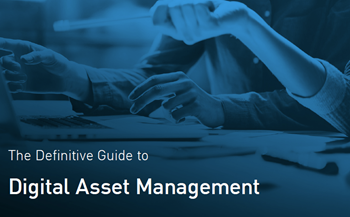Digital asset management (DAM) is becoming more important for businesses with each passing year.
The array of digital assets and materials companies use to engage with their audience and enrich their brand is expanding all the time, so you need a reliable, effective system to keep this content in order and get maximum value from it.
If done right, DAM can deliver benefits like:
- Improved brand consistency
- More agile and responsive marketing
- Better quality control
- A more empowered, better-equipped marketing team
Marketing ops is more than just software
Transform your marketing by bringing strategy, people, processes and technology together.
VISIT THE HUB ifp.ClickDetails"To get the best out of DAM, you need to ensure your system has certain elements that will make life easier for users and support your wider brand strategy.
1. Automation
DAM is one of many technologies available to marketers today that allows you to reap the benefits of automation.
When you have thousands of assets and digital files to manage, there are huge time-saving advantages to be gained from automating basic, laborious tasks such as:
- Uploading
- Categorizing
- Managing your archive
One of the most useful functions of a good DAM system is the automatic addition of keywords to images, videos, and other assets, which comes in handy when you need to locate content on a particular theme to support your marketing efforts.
You're likely to find that automation proves not only useful but vital as your digital asset library steadily expands and becomes increasingly diverse and complex.
2. Smart search
A huge collection of material to support and enrich your marketing isn't much use if your team isn’t able to conduct efficient, accurate searches of your database to find the items they need.
An ineffective DAM search function will lead to frustration in your team and, ultimately, lower-quality marketing content.
The best software will help users find what they're looking for, even if the search term entered doesn't exactly match the tags and data that accompany the asset.
A smart search function will lead you to the best outcome by taking the search term and combining it with synonyms and related words to yield more in-depth results. This capability can also help you avoid putting in dozens of versions of a particular term by understanding word variations. A search for 'smile' should give the same results as 'smiling', 'grinning' or 'happy', for example.
Learn more: How Taxonomy is the Magic Behind DAM Success
3. Access control
Having control over who’s able to access your DAM system and make changes to the content contained within it will help you maintain standards, by ensuring that no-one is able to manage or manipulate assets without permission.
Furthermore, you can assign roles to particular users, which allows you to give people certain abilities and levels of control over the system, based on their expertise and what they need the software for.
These capabilities help you maintain quality standards in DAM and also provide reassurance for users that any asset they're able to access is approved for their use.
4. Metadata and metrics
Metadata is particularly important where DAM is concerned because it allows you to create the richest and most extensive possible description of your digital assets. This will prove particularly useful when users are searching for content to support marketing campaigns.
Advanced DAM software can also help you leverage the benefits of metrics, which give you detailed, data-driven insights into how the various assets and pieces of content in your library are being used.
This can make a valuable contribution to the efficiency of your DAM by improving your understanding of your database and where it could be refined, downsized or improved.
5. Version control and history
Version control is an important element of DAM because it helps you ensure that your marketing team always has access to the best form of any given asset contained in your archive.
When changes are made to particular pieces of content, it's good to have confidence that you're able to go back to a previous version of that asset, should it be necessary.
DAM software allows you to keep track of the various versions and history of every item stored in your library, giving users maximum visibility and control. You can also see who’s using, sharing and editing content on the platform.
6. Sharing
The advanced sharing capabilities of specialist DAM applications can prove particularly useful when your teams are working on major projects that require them to distribute large amounts of content between colleagues, partners, agencies and other parties.
In these situations, basic communication methods like email might not be sufficient. Having a reliable sharing function built into your DAM software can make the job of sending large individual files or collections of data much quicker and easier.
This is another feature of advanced DAM that can boost the marketing department's efficiency and make a big difference to your everyday operations.
Further reading:
- The Marketer's Guide to Digital Asset Management
- How DAM Will Revolutionize Your Marketing Team's Productivity
- Getting on Top of DAM: 6 Simple Ways to Organize Your Digital Assets
Access the latest business knowledge in Marketing
Get Access





Comments
Join the conversation...